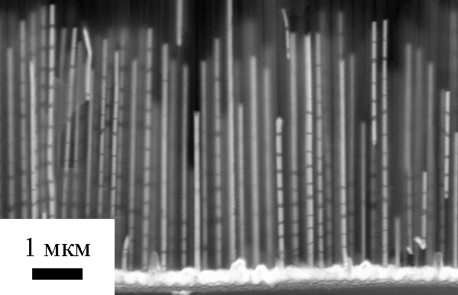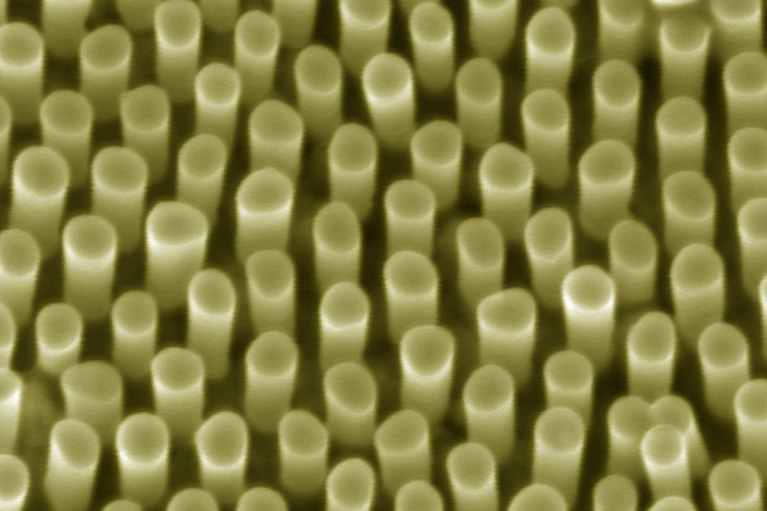One of the promising approaches for obtaining of metallic nanowires with tunable geometric characteristics is the templated electrodeposition method, which is based on using porous matrices (or templates) for nanostructures formation. By constricting the growth of a nascent phase in certain directions, matrices influence the form and the mutual arrangement of nanostructures. The key advances of electocrystallization during the filling of template pores with metals are:
- the coulometric control of the quantity of the deposited substance;
- the formation of nanostructures with tunable aspect ratio by the variation of deposition regimes and the shape of template pores;
- the filling of practically the whole pore volume with the deposited substance;
- performing the synthesis at a room temperature;
- the possibility for variation of the composition along the long axis of a nanostructure to form multi-functional materials.
We develop approaches to the controlled growth of nanowires of various composition for their application in the fields of microelectronics and photonics.

Micrograph of the nanocomposite based on anodic aluminium oxide containing segmented Au/Ni nanowires.

